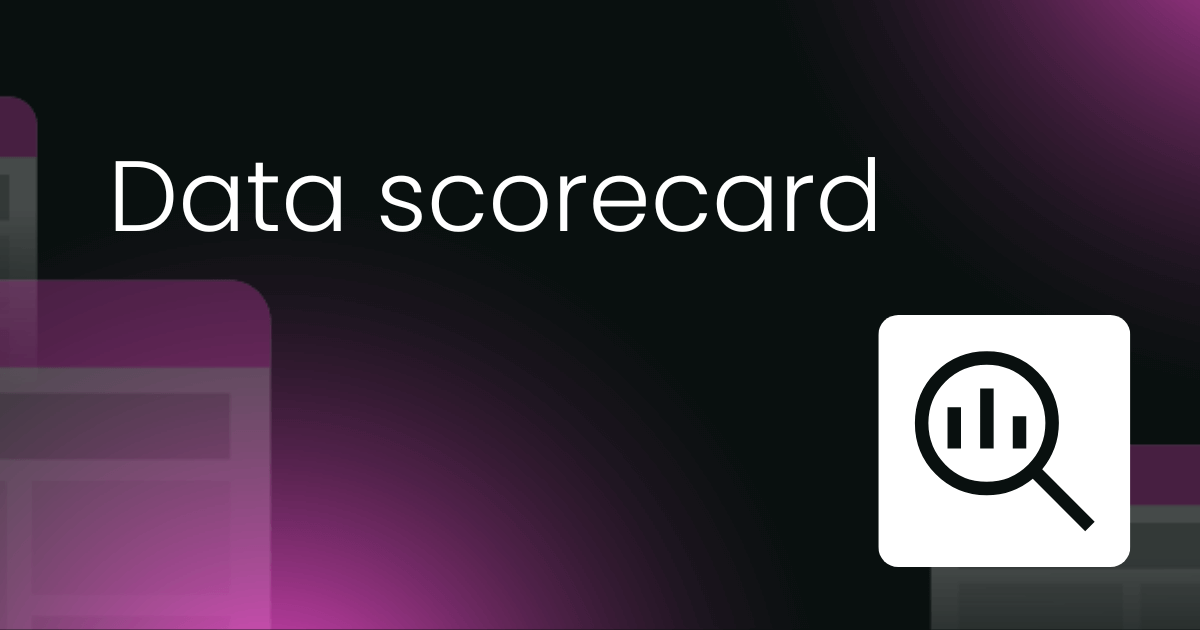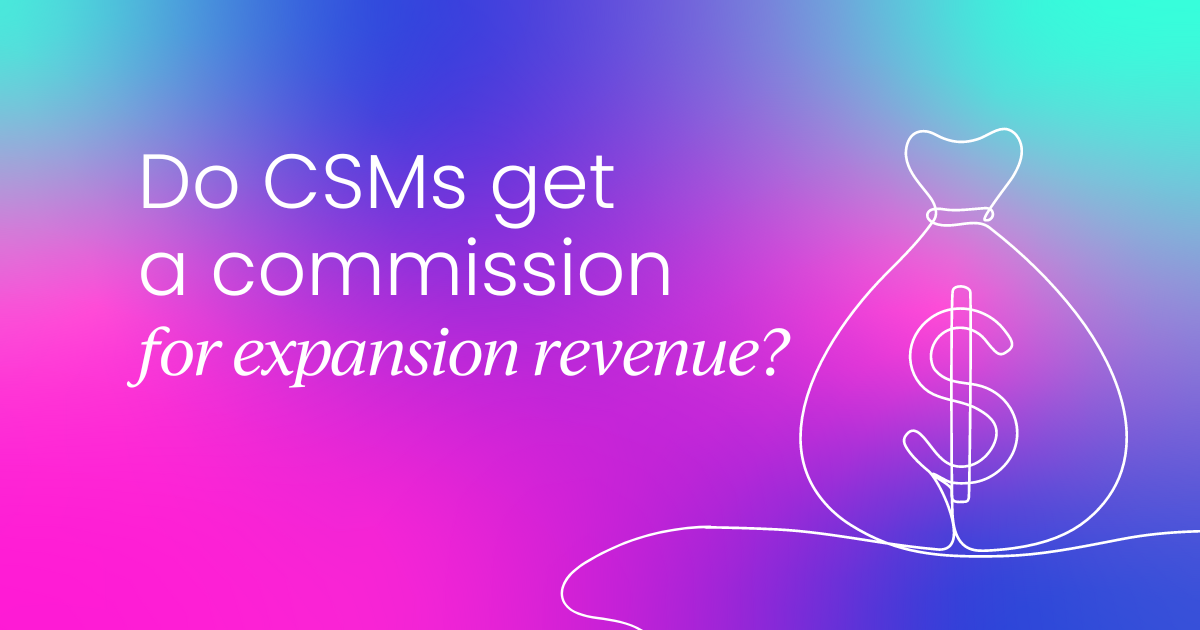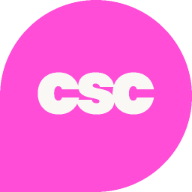At LinkSquares, we've undergone rapid scaling over the past few years, and if there’s one takeaway from this exceptional growth, it’s that you cannot underestimate the power of data in driving customer success.
As we've grown, we've learned that every decision we make, from capacity planning to driving net revenue retention (NRR) and presenting to our board, needs to be rooted in data. It's been a game-changer in how we approach customer success.
Structuring customer success for maximum impact
One of the unique aspects of our customer success structure at LinkSquares is that CS owns the entire post-sale customer journey. This includes implementation, onboarding, driving value and adoption, as well as owning a revenue line through expansion, upsells, and renewals.
This structure has been crucial to our success. By centralizing revenue accountability under the CS team, we've been able to reduce friction between sales and customer success. It's allowed our account executives to focus solely on new business, while our CS team handles retention and expansion.
This approach has enabled us to optimize both new business acquisition and customer retention. It's not just about having the right structure, though. It's about using data to drive decisions within that structure.
The metrics that matter in customer success
When it comes to metrics, there are so many that we track at LinkSquares that it's hard to narrow down. But if we had to choose, we'd say gross retention, net revenue retention (NRR), onboarding progress, and upsell transactions are at the top of our list.
Those are crucial. We also look closely at how many customers are undergoing onboarding, how many have completed onboarding, and how long they've been with us. These metrics are leading indicators of customer health and success.
And let's not forget about seasonality in new customer account delivery. This data helps us project and model exactly when we need to hire customer success managers (CSMs), ensuring they have plenty of time to ramp up before inheriting a book of business.
It's fascinating how these metrics tie together. For instance, if you have high gross retention but your NRR is just north of 100%, it tells a different story than if both metrics are high. That's why we need to look at the complete picture that the data paints.
Using data to drive customer outcomes
One area where we've seen significant impact is in using data to predict adoption patterns and develop playbooks. We're making a big investment in product usage data and how it correlates to outcomes.
Product data has been a huge gap for us until recently. We've always had surface-level data like logins and number of contracts uploaded, but now we're going much deeper.
This deeper dive into product data is enabling us to understand whether a customer is having a good onboarding experience, how they're progressing towards adoption, and what kind of playbooks we can deploy based on these data-driven scenarios.
And it's not just about the product data. We've also had to revamp our Salesforce instance multiple times to capture better data on closed-loss reasons, upsell drivers, and product roadmap influences. It's an ongoing process of refinement.

Fancy learning more about outcomes-based thinking? We've got a podcast episode that digs deep into this non-negotiable part of customer success. 👇
Fostering organizational transparency
One thing we’re particularly proud of at LinkSquares is our commitment to transparency. We share pretty much everything throughout the organization when it comes to customer success data.
If we're trusting our team to take care of our customers, we should be trusting them with the good, the bad, and the ugly when it comes to our data and insights.
This transparency has been crucial in aligning everyone towards our common goals. It helps every team member understand why their work matters, and how it contributes to our overall customer success strategy.
Plus, it creates an environment where people feel they can come to us with insights or concerns. That's how we surface the information we need to improve our product, processes, and ultimately, our customer success.

Incentivizing and structuring customer success teams
Okay, so let's talk about how we structure and incentivize our customer success team. Our CSMs are on quotas and have a variable component to their compensation tied to renewal rates and performance against their quota.
And it's worth noting, this is an uncapped plan. We love over-performance and want to reward it appropriately. However, as we've grown, we've recognized the need to further segment our CS org. We're in the process of creating a separate account management function within CS to handle upsell, expansion, and renewals.
This segmentation allows us to hone in on the right skill sets and helps CSMs feel most successful in the areas they're naturally drawn to. Some love driving adoption and value, while others excel at selling.
Even with this new structure, CSMs still have the same variable compensation plan. Everything they do to drive value contributes to the ultimate upsell or renewal.
I think it's important to mention here that we're not afraid to double-comp people. If we want new business reps to structure deals that don't cannibalize upsell potential, we let them get credit for a year. It incentivizes the right behavior and reduces friction.
Investing in people and tools
At LinkSquares, we firmly believe that our most important asset is our people. While we do invest in software and tools, they're ultimately there to help our people succeed. We make significant investments in our team, not just in terms of compensation, but also in coaching and development.
We partner with companies like Valor for mindset coaching, stress reduction, and performance improvement. It's crucial to equip our team for job they have.
In terms of tools, we have a pretty mature tech stack. We use Catalyst as our CS hub, which integrates with Salesforce, our source of truth. We also use Zendesk, Gong, Pendo, and Snowflake, among others.
And we're always looking at what's next. We’re particularly excited about the potential of customer community platforms and better learning management systemsinto (LMS) for our customers. We're also keeping an eye on advances in sentiment analysis tools.
Meeting board expectations on customer success
Our board is highly focused on customer success, particularly on net retention. They want every company to be like Snowflake, with 155-160% net retention! It's true, the board scrutiny is intense. They're interested in what our customers are saying, and they do a deep dive into every single customer who leaves us.
They're also very focused on our pipeline and what might be blocking upsells or renewals. They want to know our forecast for gross retention for the next quarter or six months, which customers are at risk, and why.
The board is essentially always testing us on how many insights we're proactively surfacing about our customer base. Do we have more insights than they have questions? That's the goal.
Challenges and opportunities in data collection
While we've made great strides in our data collection and analysis, we still face challenges. One of the biggest has been the lack of deep product usage data.
We're working hard to address this gap. The data we're now able to collect is going to enable us to know whether a customer is having a good onboarding experience, how they're progressing towards adoption, and what kind of playbooks we can deploy based on these data-driven scenarios.
Another challenge is integrating all of our systems effectively. We're constantly working on improving how our various tools talk to each other, whether it's through our analytics teams or through Catalyst.
And let's not forget the challenge of balancing quantitative data with qualitative insights. That's where initiatives like our voice of customer program come in.
Our Voice of Customer Director provides invaluable insights that help us understand the underlying, systemic issues that might be preventing us from moving forward. It's a great complement to our quantitative data.

Embracing a data-driven future in customer success
Ultimately, there's no one-size-fits-all approach to customer success. Every business is different, every team is different. The key is to let the data guide your decisions and be willing to adapt as you grow.
A note to the people managers out there: Never forget what it was like when you weren't a people manager. That perspective, combined with data, can be a powerful source of innovation and operational leverage.
It all comes back to understanding and valuing your people – whether they're your team members or your customers. And data is the tool that helps us do that more effectively than ever before.
The future of customer success is data-driven, but it's still fundamentally about people. By embracing both, we can drive better outcomes for our customers and our businesses.
We hope you've found some insights you can apply in your own organizations. Remember, the journey to truly data-driven customer success is ongoing. Stay curious, keep learning, and never stop seeking new ways to leverage data to serve your customers better.
Experience this article IRL
This whipper snapper of an article is based on Jessica and Steve's 2022 keynote session at our annual Customer Success Festival in Boston. If you missed out and want to watch the real McCoy with your own eyes, you can do so with one of our membership plans.
But if you want to have white-hot insights like this without any intervention, get on down to an in-person Customer Success Festival and experience the magic for yourself. Whether it's Amsterdam or San Francisco, Austin or Sydney, there's a conference just for you.
This article is based on a keynote presentation given by Jessica Bicknell and Steve Travaglini at our conference, Customer Success Festival Boston in 2022.
At the time of presenting, Jessica held the position of VP of Customer Success at LinkSquares, while Steve served as the company's Chief Revenue Officer. You can watch the full session OnDemand with a CSC membership plan.



 Follow us on LinkedIn
Follow us on LinkedIn





